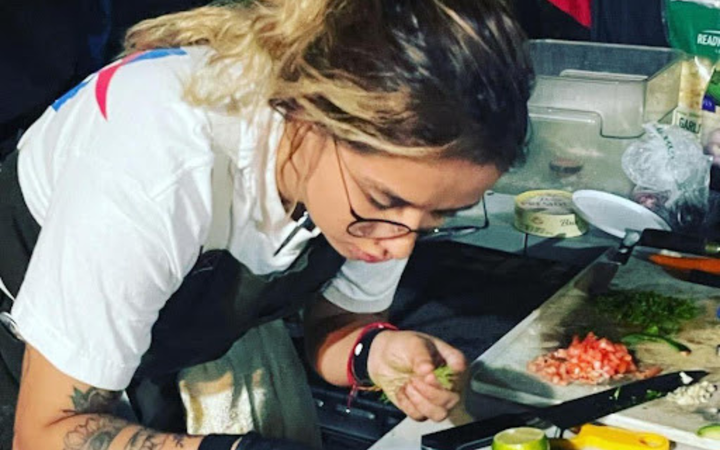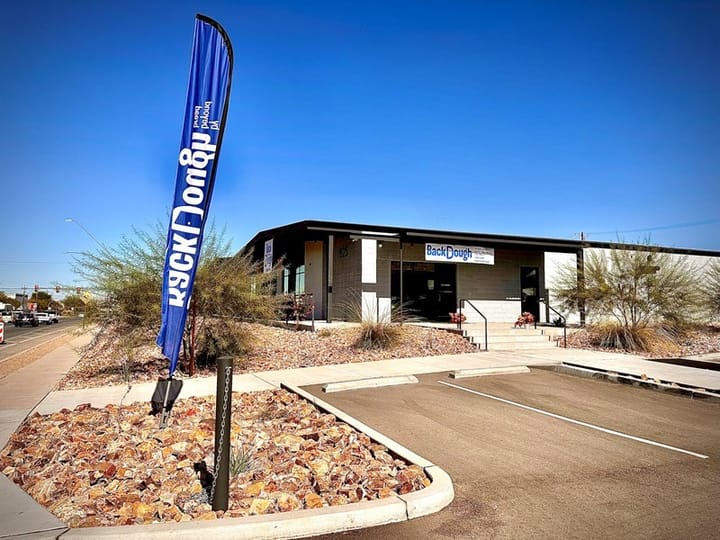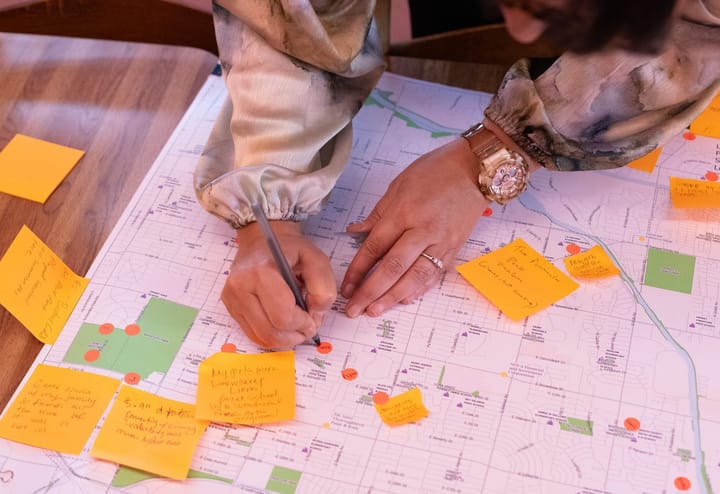Tucson sewing efforts stitch community and sustainability
A growing movement of sewing efforts is reviving the lost art of stitching while fostering sustainability, creativity and community connection.
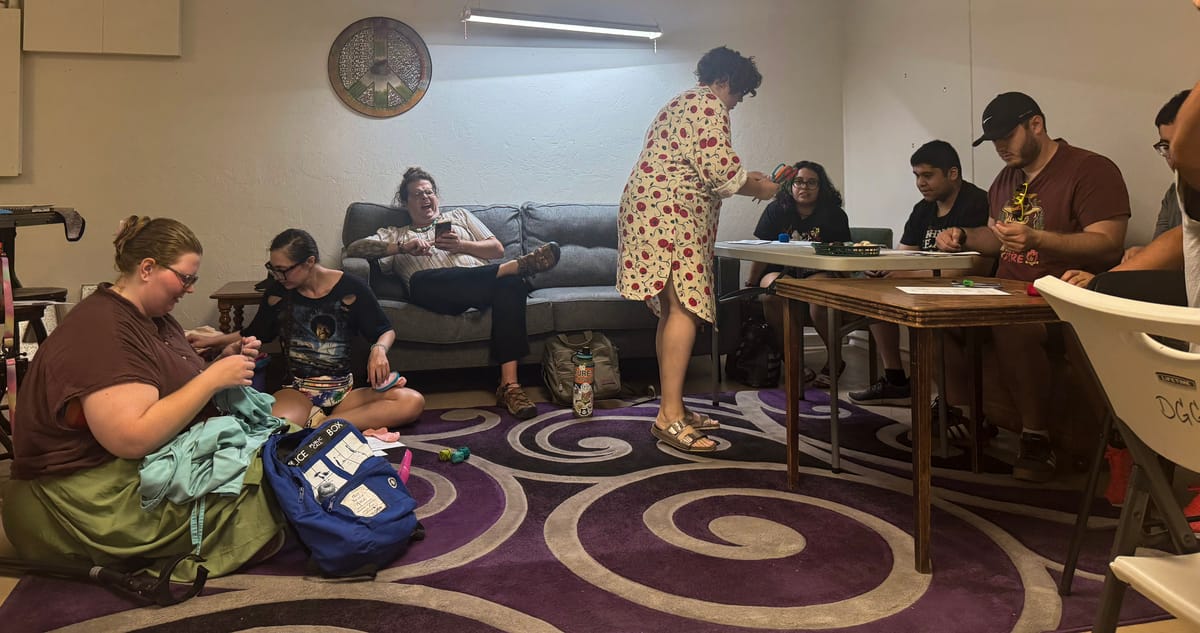
Once fading from daily life, sewing is making a comeback in Tucson as residents turn to mending and creating clothes for sustainability, community and self-reliance.
As prices climb nationwide, many people are weighing the ethics of fast fashion against its convenience and affordability. As a result, more people are seeking sustainable ways to live.
For some, this means using public transportation or growing their own food. For others, this shift has led to a return to the age-old practice of sewing.
Regina Dante runs a program called Crafting Resilience, offering workshops around town for people to learn sewing techniques or to find a safe place to work on projects.
She says sewing is a lifelong skill and that clothes mended or created by a person will last longer than those found at big retailers like Walmart.
“People don't realize, yes, it costs more, but you have to think about what resources were used to make it (and) were the people who made those clothes paid living wages?” Dante said.
After stepping away from teaching for years, Dante decided to resume after noticing a common frustration.
“I got really tired of hearing people say, ‘I wish I could sew,’” she said. “I have the skills and the resources, so I'm just going to teach people.”
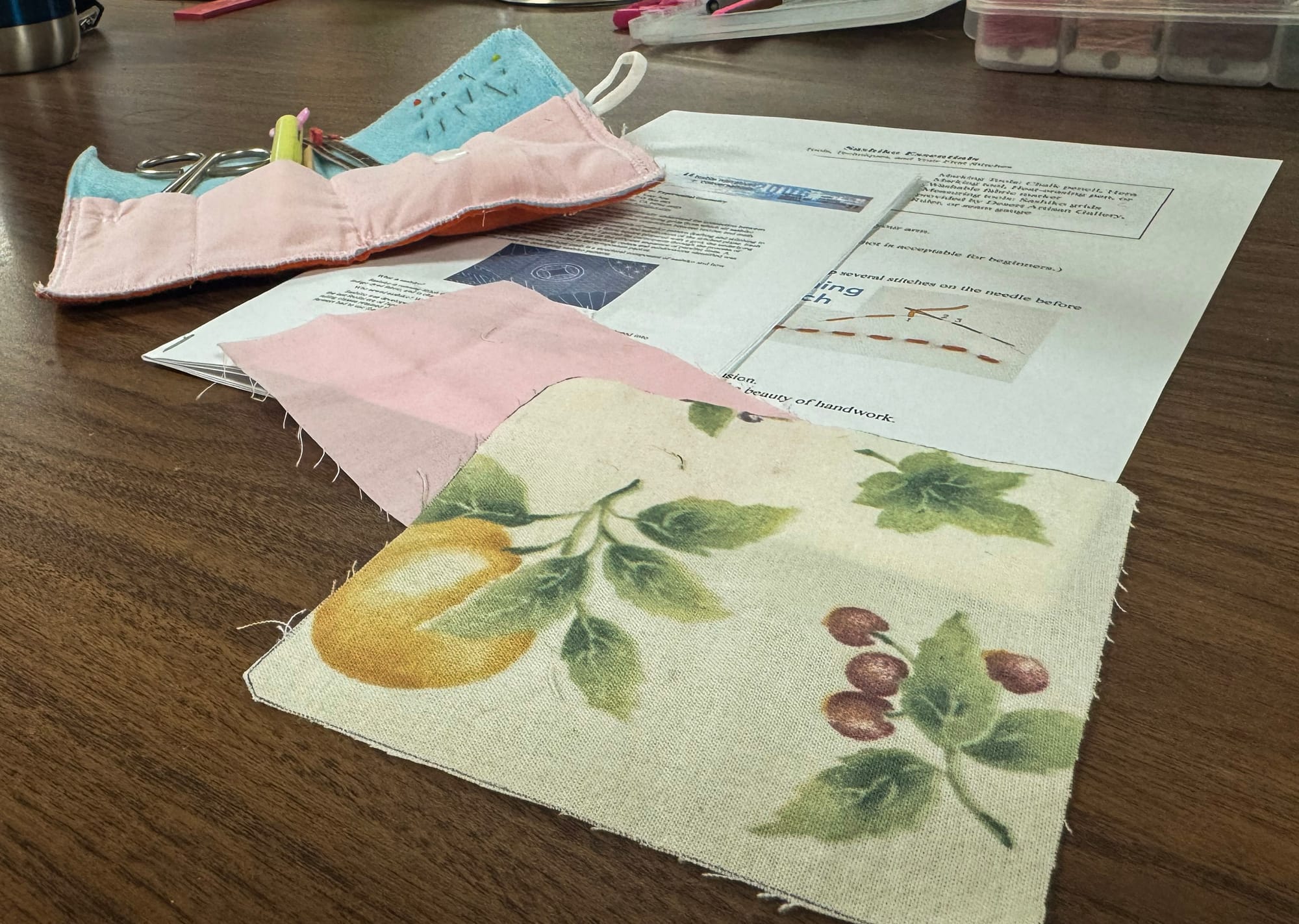
Dante provides all the necessary materials during her classes. Her July 27 mending workshop was the biggest class she’s taught to date, but everyone was able to get some one-on-one attention.
Participants received pamphlets describing the steps in case they needed extra visual guidance, along with a lesson about the history of the Sashiko mending technique being taught.
Guests mingled to the sounds of light music, many new to sewing or reconnecting with old skills. Others worked on independent projects, sharing laughs over their sewing mistakes.
The classes rotate between Desert Garden Gallery and the W. Anne Gibson-Esmond Station Library. All upcoming workshops are posted on Dante’s Crafting Resilience Instagram page.
“I can't teach everyone, but hopefully more people that know how to sew will keep doing this, so that we keep this going and people can learn how to be self-sufficient,” Dante said.
The Cinnamon Girls are also focusing on the lost art of hand sewing, but their primary focus is on giving back to the community.
“We run something called the Community Craft Closet, and that's how we accept donations and get the yarn back out there,” said co-founder Caroline Gardner. “We work with schools, we work with (senior living communities). We work with anybody that needs, wants or desires crafting materials, specifically yarns, sometimes fabric.”
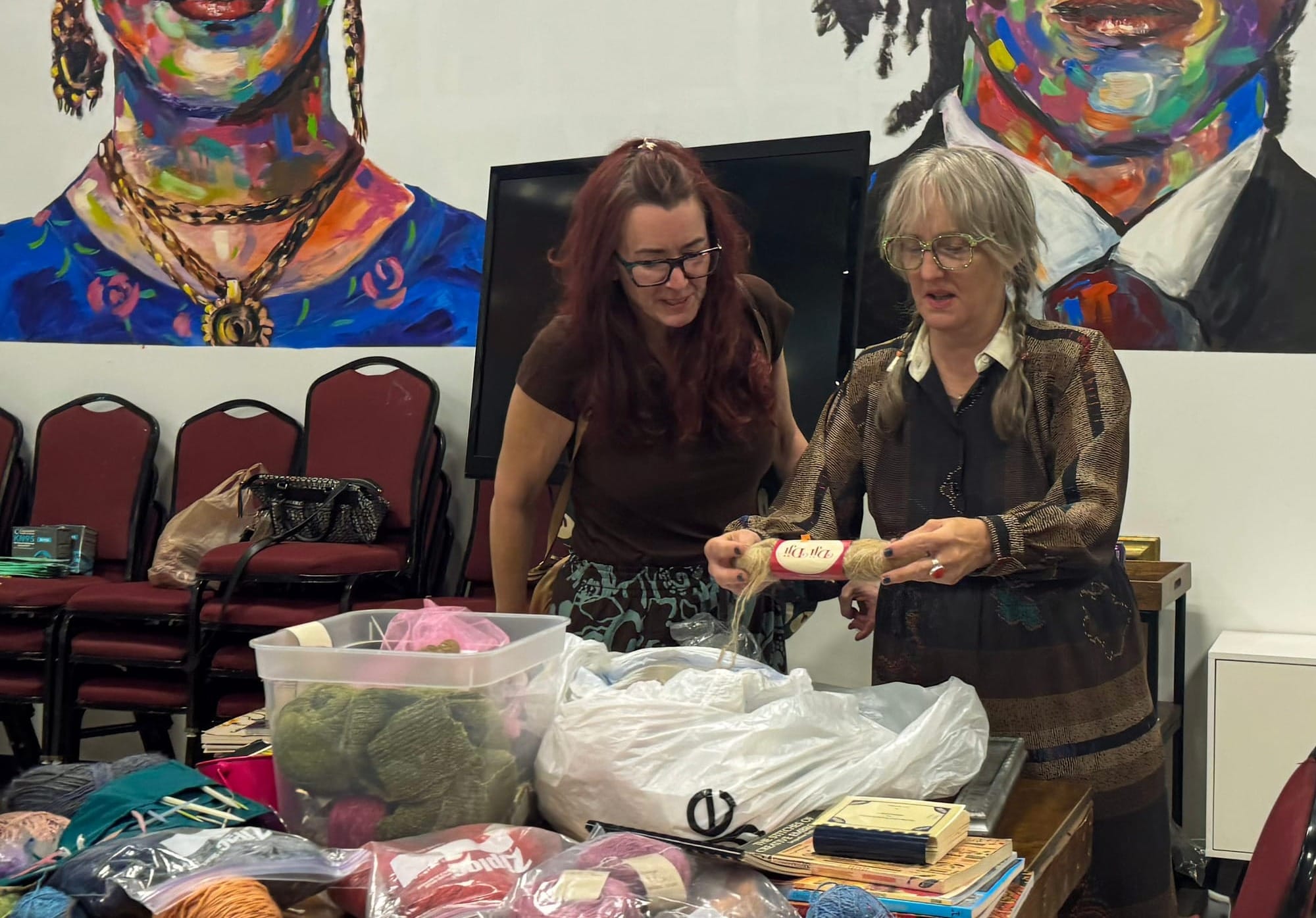
The Community Craft Closet had been run out of the Catalyst Arts and Maker Space. Gardner and Cinnamon Girls partner Tina Howard were artists-in-residence in April at the Southern Arizona Arts and Cultural Alliance’s Catalyst Creative Collective.
The closet recently moved out and is looking for a new space, but the pair are optimistic they will find one soon.
Gardner and Howard created Cinnamon Girls this year, but the two had been involved in the sewing community for years. They said they felt like there was a lack of a “third space” for sewing. Third spaces are places separate from a person’s home and workplace where they can socialize, relax and build community.
While their primary focus is distributing free materials to the community, they also offer lessons and workshops and are available to help anyone interested in sewing.
Gardner describes what she and Howard have created as a “mini society” for people who find not just the act of sewing, but also the community it brings, to bedeeply therapeutic.
“Not to be absolutely ridiculous, but it's a very close-knit community,” Gardner said. “These are people that get together and share over their stitches and share what's going on in their lives and what they think about the world, and they seek community, and they actually get a lot of solace and support as they're stitching.”
Gardner describes what they are doing as “craftivism,” using fiber arts as both a creative outlet and a tool for community building and change.
During the Cinnamon Girls’ most recent event, they opened up their space at Catalyst to the community, inviting people to take as much yarn, needles and other materials as they wanted.
The event was primarily advertised to teachers, but was open to the public.
The pair said they get a lot of requests from science and art teachers, as well as people in retirement communities and those in shelters or transitional housing.
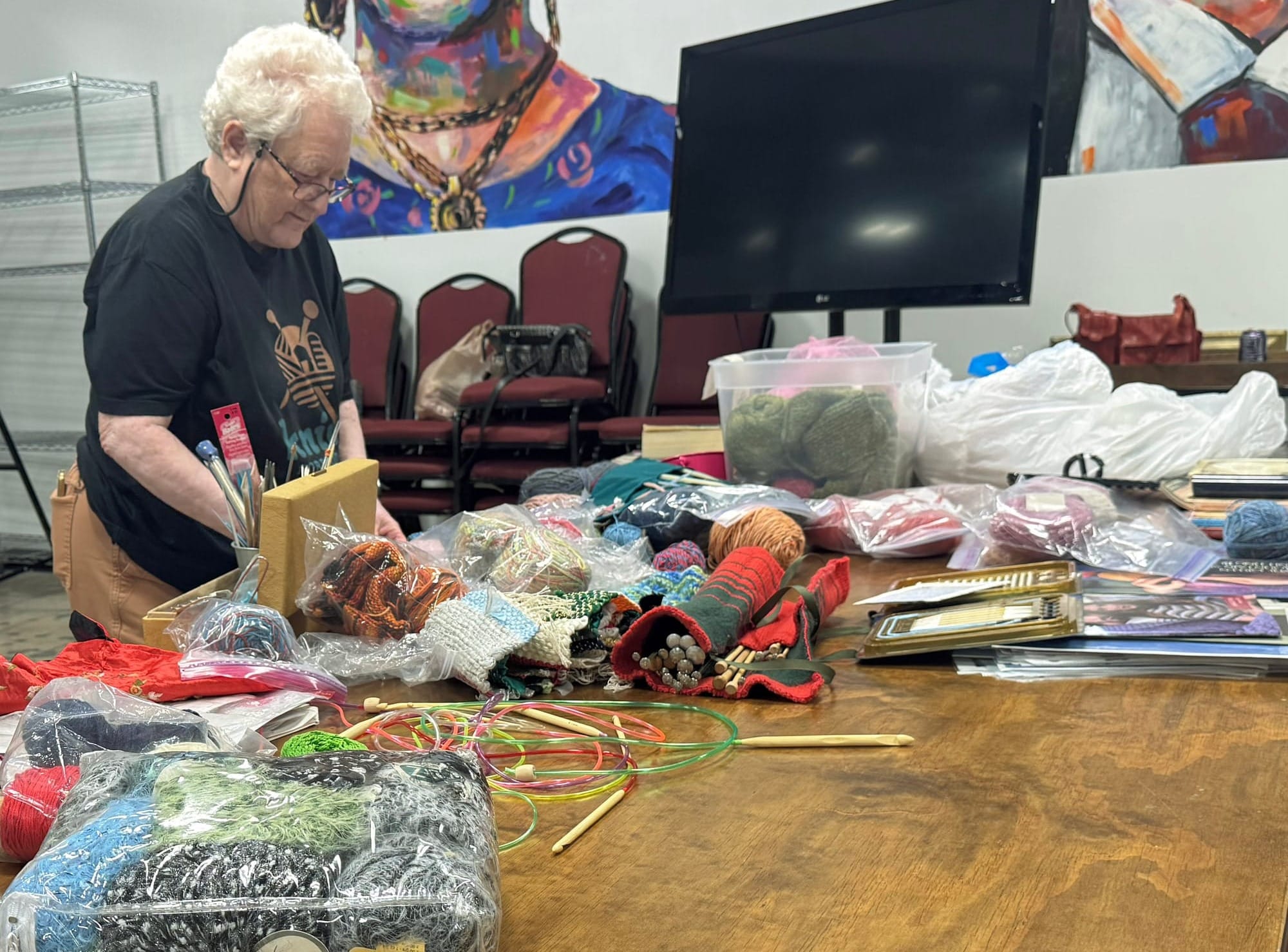
Howard said any form of sewing can be soothing and has psychological benefits for those experiencing hardships. She emphasized that sewing is often viewed as inaccessible, with fabric stores seen as intimidating and supplies expensive. The Cinnamon Girls hope to remove those barriers and increase accessibility.
“This was a way to take that completely out of it, like we don't even have to talk about money,” Howard said. “You just come, take what you want, and I don't have any investment in what happens once it leaves it, because that's their creative process.”
Howard notes that while cheap clothing from large retailers may seem affordable, it often comes at an ethical cost. She adds that although some consumers seek out “handmade” items, the reality is that all clothing is handmade — just not always under fair or ethical conditions.
“Even your $12 jeans, someone's hands push them through that machine. That's handmade, and you have to think about that, right?” Howard said. “What does that mean? How do we care for our community, the global community?”
The group's primary goal is to serve as a bridge between people who have too many sewing supplies and nowhere to put them, and those facing barriers who are unable to express themselves creatively, or people who feel like they are violating their ethics by purchasing fast fashion.
“I think that regardless of how much we've given, I think that the people that we've met and the interactions we've had, I've gotten a lot out of this,” Howard said.
The pair shared the story of a person who went into cardiac arrest and had her shirt cut off during lifesaving measures. While she appreciated the efforts, the shirt was meaningful and it was devastating to have it ruined.
The shirt was transformed into a design of a horse running across a grassy plain, a piece Howard and the owner carefully crafted to reflect the woman and her journey.
Howard said she still keeps in touch with the woman and has collaborated with her on other projects, but the shirt’s transformation reminded her of the power of community — of helping a neighbor and restoring joy to their life.
The Cinnamon Girls post regular updates to their Instagram page and will pick up donations from community members with supplies to share.
Emma LaPointe is a journalism, political science and German Studies major at the University of Arizona and Tucson Spotlight intern. Contact her at emma.m.lapointe@gmail.com.
Tucson Spotlight is a community-based newsroom that provides paid opportunities for students and rising journalists in Southern Arizona. Please consider supporting our work with a tax-deductible donation.

